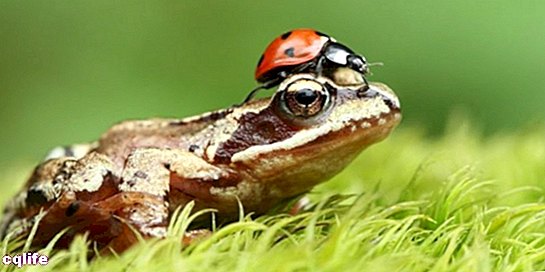We explain how animals are classified, the specific characteristics of vertebrates and invertebrates, and various examples.

How are animals classified?
Animals, also called metazoans or members of the animal Kingdom (animalia), they are living beings multicellular, endowed with their own mobility and a metabolism based on the biochemical breakdown of the organic material coming from others living beings. In this they are distinguished, as we know, from plants, immobile and capable of synthesizing their own food from the inorganic material and the sunlight.
However, the world of animals is vast and complicated, and the human being he has been trying to understand it since ancient times. To do this, it has designed numerous classification systems, which throughout history have been refined, and which today we understand more or less as follows:
Invertebrate animals. In the strict sense, they are those that do not have a vertebral column or skull, although this extends to an articulated internal skeleton. They can have exoskeletons or other forms of support and body defense, on the other hand. In general, invertebrates are evolutionarily simpler beings, with soft structures and small size, among which is 95% of the species known animals. They include:
- Sponges or poriferous. They are the simplest animals that exist, which lead a slow and aquatic life on different surfaces of the seabed, filtering the Water passing through its ducts and growing in colonies of more or less identical beings.
- Mollusks. Mostly marine creatures, although there are also terrestrial species (such as slugs and snails), they have a soft body that may or may not be covered by a calcareous shell, and that may or may not have limbs, such as feet or tentacles. Examples of mollusks are oysters, octopuses, squid.
- The worms. In this group we can gather both annelids (segmented worms, such as earthworms) and worms (flat worms, such as flatworms and nematodes), that is, the elongated animals without limbs, which make life in the environment O well parasitizing to other living beings, animals and / or plants.
- Echinoderms. Marine animals endowed with a calcareous internal skeleton, whose bodies show pentaradial symmetry and often tentacles (like starfish), or sharp spines (like sea urchins).
- The arthropods. This is the largest group of animals on the face of the Earth and it has conquered absolutely all habitats. They are beings endowed with chitin exoskeleton, some winged, all endowed with articulated limbs. We refer to the immense totality of insects, to millipedes or centipedes (millipedes and centipedes), to crustaceans (crabs, lobsters, prawns) and also arachnids: mites, scorpions and spiders in general.
Vertebrate animals. They are those that have a vertebral column and a skull, in which a highly developed nervous system is protected, and that is complemented by a more or less articulated endoskeleton. Although they are a comparatively minority of species, they are the most evolutionarily complex and largest, adapted to life in Earth, Water Y air. Vertebrates are also often called "cranial" (craniata) and they include:
- Lampreys.They are animals similar in appearance to eels, but devoid of jaws and scales. They are considered the starting point of current vertebrates, since they do not have vertebrae, but rather similar structures.
- Fish. Both the bony and the cartilaginous (such as rays and sharks), and both the ray-finned and the lobed-finned, are the most abundant vertebrates in the world. sea. Thousands of species of them are known, and they form the bulk of the marine life on which humans feed.
- The amphibians. Of terrestrial life but aquatic habits (such as reproduction), these living beings were the first to make the leap from marine to terrestrial life, and today they are located somewhere in between. Frogs, toads, salamanders and other similar amphibians deposit their eggs in wells, lakes and rivers, and from them hatch young with gills and appendages to swim, which after a metamorphosis they will gain lungs and terrestrial limbs.
- The reptiles. Terrestrial animals mostly, of reproduction oviparous and cold-blooded, scaled body, these animals once ruled the world. Today they are a diverse group, including turtles, crocodiles, iguanas, snakes, and other similar animal life forms.
- The birds. Evolutionary descendants of the reptiles of yesteryear, birds are the world's largest flying creatures, whose lightweight, hollow-boned bodies are covered in feathers of various colors. Its head has a bony beak for feeding and two legs with claws of different sizes. They can be habits carnivores, vegetarian or scavengers, and many of them inhabit the surfaces of the seas, rivers and lakes.
- The mammals. Characterized by a reproduction viviparous And by feeding their young with breast milk, mammals are an extremely diverse group of warm-blooded animals, ranging from a giraffe to a lion or a seal, from an ape, an elk, a dog or a bear, even the human being.
